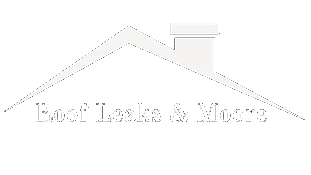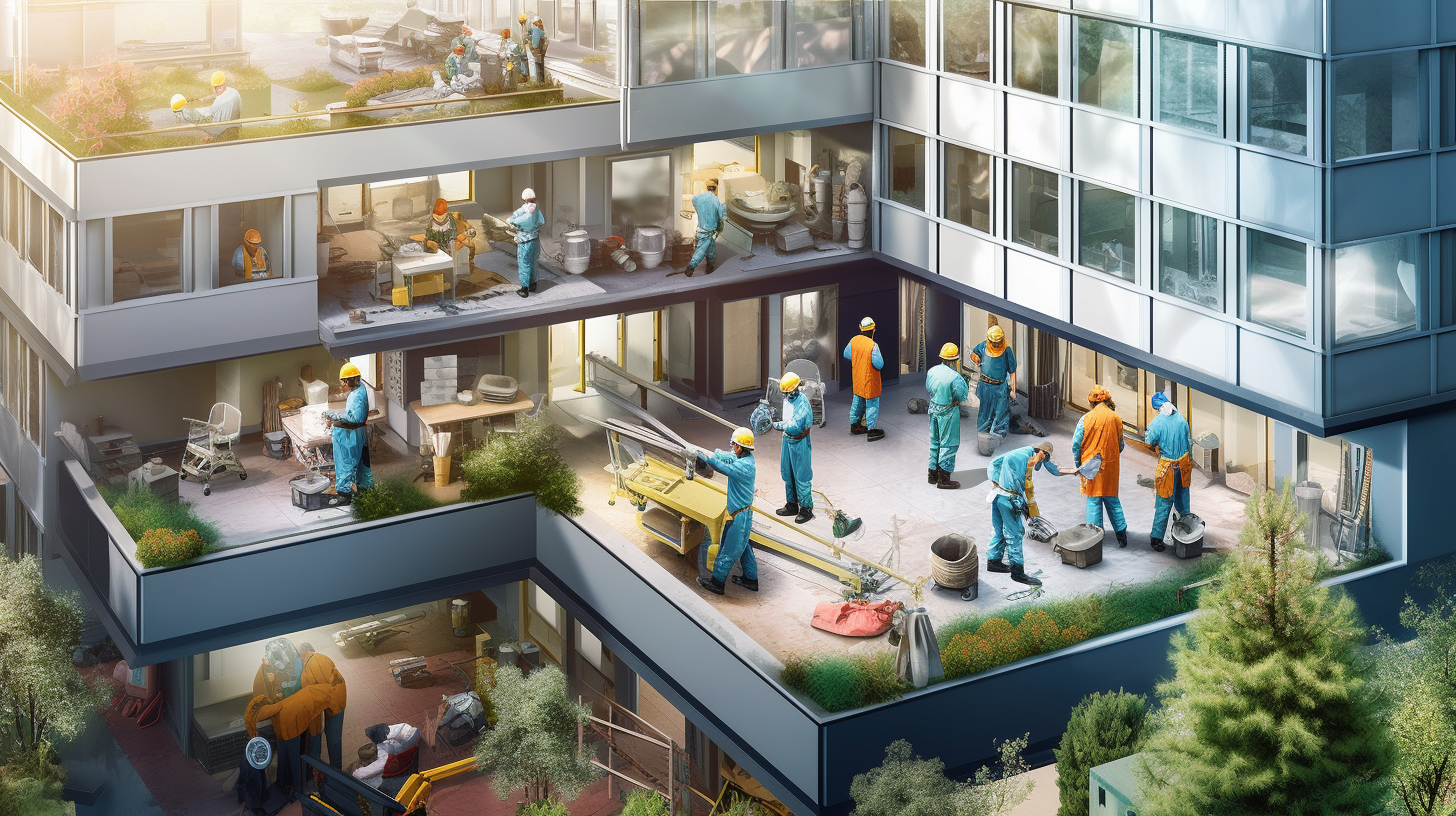When it comes to roofing work in healthcare settings, there are a number of challenges that must be overcome to ensure the safety and comfort of both patients and staff. From noise and dust to potential disruptions to patient care, there are a number of factors that must be carefully considered and managed in order to minimize any negative impacts.
As a healthcare professional, it is your responsibility to prioritize the safety of those in your care, and this means taking a proactive approach to managing any roofing work that may be required in your facility.
In this article, we will explore the various types of roofing work that may be required in healthcare settings, as well as the challenges and risks associated with this work. We will also provide practical tips and strategies for developing a comprehensive safety plan that takes into account the unique needs and requirements of your facility, and discuss ways to minimize disruptions to patient care.
By prioritizing patient and staff safety during roofing work, you can help to ensure that your facility remains a safe and comfortable environment for all.
Understanding the Types of Roofing Work Required in Healthcare Settings
Get ready for some serious roof work, because there are all kinds of roofing tasks that need to be done in healthcare settings!
When it comes to healthcare roofing projects, there are a variety of roofing materials that may be used. Some common roofing materials include asphalt shingles, metal roofing, and flat roofing materials. Each type of roofing material comes with its own set of advantages and disadvantages, which must be carefully considered when planning a roofing project in a healthcare setting.
Cost considerations are also an important factor to take into account when it comes to roofing work in healthcare facilities. Budget constraints are often a concern, and healthcare organizations must carefully balance the need for high-quality roofing with the need to keep costs down. Working with an experienced roofing contractor can help to identify cost-saving measures and ensure that the project stays within budget.
By understanding the types of roofing work required and the cost considerations associated with these projects, healthcare organizations can prioritize patient and staff safety while minimizing disruptions to daily operations.
Now, let’s move on to identifying the challenges associated with roofing work in healthcare facilities.
Identifying the Challenges Associated with Roofing Work in Healthcare Facilities
You’ll face numerous challenges when it comes to roofing work in healthcare facilities. Logistical considerations are a major obstacle, as healthcare settings need to remain operational and maintain a safe environment for patients and staff. This means scheduling roofing work at times that won’t disrupt patient care, such as evenings or weekends.
Additionally, you’ll need to plan for the safe movement of materials and equipment through the facility, as well as ensuring that any noise or dust produced during the work is kept to a minimum. Effective communication strategies are also crucial when it comes to roofing work in healthcare facilities.
You’ll need to work closely with the facility’s staff to ensure that they are aware of the work being done and are able to make necessary adjustments to patient care and operations. This may involve holding regular meetings or providing written updates on the progress of the project. Clear communication with patients and their families is also important, as they may have concerns about the impact of the work on their care.
By taking a proactive approach and addressing these challenges head-on, you can ensure that roofing work in healthcare facilities is completed safely and efficiently. This sets the stage for the subsequent section about developing a comprehensive safety plan.
Developing a Comprehensive Safety Plan
To ensure the safety of patients and staff during roofing work in healthcare facilities, it’s important to develop a comprehensive safety plan.
This plan should begin with conducting a thorough risk assessment of the roofing project and the potential hazards it poses.
Next, establish a safety committee to oversee the plan’s implementation and identify emergency procedures in the event of an accident or unexpected event.
By taking these proactive steps, you can minimize disruptions and ensure the safety of all individuals within the healthcare setting.
Conducting a Risk Assessment
Like a captain charting a course through a treacherous sea, conducting a risk assessment is crucial in ensuring the safety of patients and staff during roofing work in healthcare settings.
Before any work begins, it’s important to assess the potential risks involved and develop a comprehensive safety protocol to mitigate those risks. This involves identifying potential hazards such as falling debris, noise disruptions, and potential exposure to hazardous materials.
By conducting a thorough risk assessment, you can determine the appropriate safety measures that need to be put in place to protect patients and staff. This may include setting up barriers to prevent patients and staff from entering the work zone, implementing noise-reducing measures, and establishing protocols for handling hazardous materials.
By prioritizing safety and taking a proactive approach to risk assessment, you can minimize disruptions and ensure a safe environment for everyone involved.
With a solid risk assessment in place, the next step is to establish a safety committee to oversee the implementation of the safety protocol and ensure that all safety measures are being followed.
Establishing a Safety Committee
Establishing a safety committee is a key step in ensuring a smooth and secure roofing project in medical facilities. The committee will consist of representatives from different departments, such as facilities management, risk management, and nursing staff, who’ll be responsible for overseeing and implementing safety measures during the roofing project.
The committee members will have specific roles and responsibilities that’ll be communicated clearly to everyone involved in the project. Roles and responsibilities of the safety committee members will include conducting regular safety inspections of the work area, ensuring that all safety equipment is in place and functioning properly, and communicating any safety concerns to the project team.
Communication strategies will also be established to ensure that all staff members are informed about the roofing work and any potential disruptions that may occur. Regular meetings will be held to keep everyone up-to-date on the progress of the project and any changes to the safety plan.
By establishing a safety committee, medical facilities can prioritize patient and staff safety during roofing work and minimize disruptions to daily operations. As part of the safety plan, emergency procedures must also be identified and communicated to all staff members.
Identifying Emergency Procedures
Now that you’ve established a Safety Committee, the next step is to identify emergency procedures. Emergencies can happen at any time, and it’s crucial to have a plan in place to minimize the risk of injury and property damage.
Start by assessing the potential risks and hazards associated with roofing work. Consider factors such as weather conditions, the location of the work site, and the types of equipment and materials being used. Once you have identified the risks, create a comprehensive emergency response plan that outlines procedures for evacuating patients, contacting emergency services, and mitigating any potential damage.
In addition to creating an emergency response plan, it’s also important to ensure that your staff is properly trained to respond to emergencies. Make sure that everyone on your team knows what to do in the event of an emergency and has access to the necessary equipment and resources. This may involve conducting regular training sessions, providing written procedures and checklists, and appointing designated emergency responders.
By taking proactive steps to prepare for emergencies, you can help ensure the safety of your patients and staff during roofing work.
As you move forward in prioritizing patient and staff safety during roofing work, it’s important to consider ways to minimize disruptions to patient care.
Minimizing Disruptions to Patient Care
To ensure uninterrupted patient care during roofing work, hospital staff and contractors must work together like a well-oiled machine. This requires effective communication strategies and thorough staff training.
Here are some emotional sub-lists to consider:
- Fostering Trust: Patients rely on healthcare facilities to prioritize their safety and well-being. Disruptions in care can lead to anxiety and mistrust. By working together and providing transparent communication, hospital staff and contractors can build trust with patients and ensure that their care remains a top priority.
- Minimizing Noise Pollution: Loud noises from roofing work can be disruptive and unsettling for patients trying to rest and recover. To minimize noise pollution, contractors can schedule work during off-peak hours and use sound barriers to reduce noise levels. Staff can also provide noise-cancelling headphones to patients.
- Maintaining Cleanliness: Dust and debris from roofing work can pose a health hazard to vulnerable patients. Contractors should take extra precautions to minimize the spread of debris, such as using tarps and cleaning up regularly. Staff can also provide additional cleaning services to ensure that patient areas remain clean and safe.
By implementing these emotional sub-lists, hospital staff and contractors can work together to minimize disruptions to patient care during roofing work. This not only ensures patient safety but also helps to maintain compliance with regulations and standards.
Ensuring Compliance with Regulations and Standards
You can ensure that your hospital meets all necessary regulations and standards during roofing projects by implementing thorough planning and communication strategies with your contractors.
Regulatory implications are a crucial consideration when planning any construction work, and roofing projects are no exception. There are specific regulations that govern how roofing work should be conducted in healthcare settings, and it’s important to ensure that your contractors are aware of them and are in compliance.
Additionally, industry standards should be taken into account to ensure the highest levels of safety for both patients and staff.
To ensure compliance with regulations and standards, it’s recommended that you work closely with your roofing contractors to develop a detailed plan for the roofing project. This plan should outline all necessary safety precautions, including any protective measures that need to be put in place to prevent disruptions to patient care.
Communication is also key during this process. Regular meetings with your contractors can help ensure that everyone is on the same page and that any potential issues are identified and addressed before they become more significant problems.
By taking a proactive approach to regulatory compliance and industry standards, you can help minimize disruptions during roofing projects and ensure the safety of your patients and staff.



